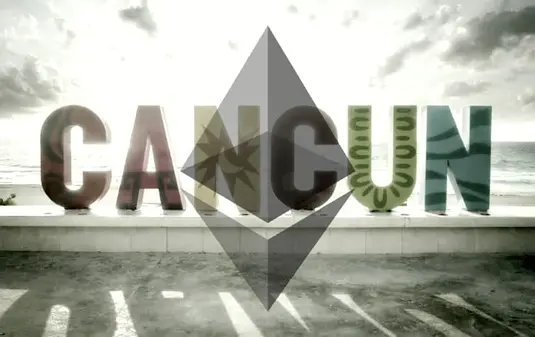Follow these 3 AIs, and you won't have to go to work anymore
Author: Xiaoyan
Editor: H.B
The Chain Cow Niubite (niubite.com) shares that as we enter 2024, the trend of Ethereum has garnered much attention. The Ethereum Cancun upgrade at the beginning of the year has been anticipated in the crypto circle for quite some time. Everyone's ideas, or rather their demands, are relatively consistent: the Cancun upgrade is considered a significant positive, hoping to trigger a round of one-sided market trends.

Unfortunately, such beautiful expectations ultimately fell short. What emerged after the Cancun upgrade was not a thriving market, but rather a mess.
After the Ethereum upgrade, the market declines instead of rising! Will it hit bottom and rebound, or will it continue to plummet?
Many times, the feedback the market gives you is quite unexpected. You think a surge is coming, but what greets you is a crash; you believe it's a huge positive, but in reality, it becomes a negative.
Regarding the lackluster performance of the market after the Cancun upgrade, many people feel surprised and even lose confidence in Ethereum. However, if we analyze it carefully, we will find that any unexpected outcome is actually within reason; everything can be traced back to its source.

First of all, the essence of the Cancun upgrade lies in EIP-4844 and Blob-carrying transactions, which introduce three key enhancements: reducing transaction fees, enhancing Ethereum's scalability, and enabling the community to test the Ethereum network's capacity to handle increased data loads in production, preparing for a comprehensive sharding upgrade. Compared to existing methods, EIP-4844 and Blob-carrying transactions can utilize block space more effectively. However, in reality, the blobs represent a completely different type of transaction, having their own fee market and not being affected by the increase in regular transaction activities on the Ethereum mainnet.
Secondly, many leading Layer 2 projects (such as Arbitrum, Blast, etc.) have not yet switched to the DA layer. The specific timing of the Cancun upgrade must wait until the leading Layer 2 projects gradually switch to the DA layer, and after the Rollup parameters are adjusted and market dynamics are balanced.
More importantly, after the Cancun upgrade, the business model of the Ethereum mainnet will primarily focus on selling block space, while the revenue from application layer taxes will shift to general Layer 2. However, the general Layer 2 teams are heavily ideological and are not real competitors to chains like Solana. This is precisely why ETH has been sluggish, while SOL's price has remained stable (even the token prices of the entire Solana ecosystem have seen a general rise).
In summary, the decline of ETH is still due to a lack of confidence in the results that the Cancun upgrade can bring.
Just when it rains, Ethereum ETF seems to be in trouble too?
Having discussed the ETH market, let's take a look at the progress of the Ethereum ETF.
At the beginning of this year, SEC (U.S. Securities and Exchange Commission) Chairman Gary Gensler cast a decisive vote and historically approved 11 Bitcoin spot ETFs. In the month following this, the entire crypto industry was very excited, with many insiders predicting that the Ethereum spot ETF would also receive similar approval as early as May. Currently, seven issuers are hoping to launch an Ethereum ETF, including BlackRock, Fidelity, Invesco, Galaxy, Grayscale, and others.
At that time, many securities lawyers stated that the legal precedent set during the approval process of Bitcoin spot ETFs would provide a blueprint for the approval of Ethereum ETFs. Marc Powers, a blockchain professor at Florida International University College of Law and a former SEC enforcement lawyer, stated that the SEC would find it difficult to present new arguments to reject the Ethereum spot ETF. He even believed that "Chairman Gensler won't have many options."
However, by March, the winds quickly changed. On March 20, Bloomberg industry research analyst James Seyffart stated that the likelihood of the Ethereum spot ETF being approved in May had become increasingly slim. He said, "We now believe that this round of applications will ultimately be rejected on May 23." It is worth noting that Seyffart and his colleague Eric Balchunas had previously estimated a 35% chance of approval for such products in May, but now they believe this possibility is decreasing. It is reported that the SEC had previously postponed its decision on the Ethereum spot ETF, but it will not be indefinitely delayed and will make a final decision before May 23, as this is the final approval deadline for one of the applicants.
Facing multiple crises, how can Ethereum find a way out in the future?
Undeniably, in recent years, Ethereum has been the most eye-catching digital asset in the cryptocurrency market after Bitcoin. Standard Chartered even predicts that with the favorable conditions emerging in 2024, ETH is likely to break its historical high. However, currently, ETH is off to a poor start, even declining after the Cancun upgrade.
So, what kind of development trend can we expect for Ethereum moving forward?
Overall, Ethereum remains a strong player among stablecoins, possessing a robust consensus and stable user base, and still has significant upside potential in the future. However, the crypto market is extremely complex, and its fluctuations are closely related to factors such as the growth of demand, the push of technological upgrades, the participation of financial institutions, and even the impact of the global economic environment.
In terms of market demand, Ethereum's price performance is influenced by the acceleration of the global digitalization process. Only when the usage of the Ethereum platform continues to expand will the market demand for it continue to rise, thereby supporting its price. In terms of technical support, Ethereum's development team must continuously enhance the platform's functionality and scalability. Technological upgrades are fundamental and core, which can attract more users and investors to Ethereum, thus driving up prices. In terms of market competition, Ethereum is far ahead but not the only player. There are still other competitors in the market, such as Polkadot and Cardano, which are continuously improving and developing. To maintain its price strength, Ethereum must continually enhance its technology and ecosystem to attract more users and developers.
Moreover, the influence of the global economic environment is also unavoidable. If the global economy maintains stable growth, the demand for risk assets may increase, which can provide favorable support for the prices of cryptocurrencies like Ethereum. Conversely, if the global economy faces uncertainty or recession, investors may lean towards conservative investments, which could put pressure on Ethereum's price. It is not an exaggeration to say that any slight change can become a significant factor driving Ethereum's price up or down.
Thus, based on the current market trends and future development prospects, Ethereum is likely to show positive signs in 2024. However, investors still need to carefully observe market dynamics, as the market is ever-changing.
Nonetheless, while understanding the potential future development directions of Ethereum is important, what is even more crucial for investors is to understand themselves.
P.S. This article does not constitute any investment advice.









